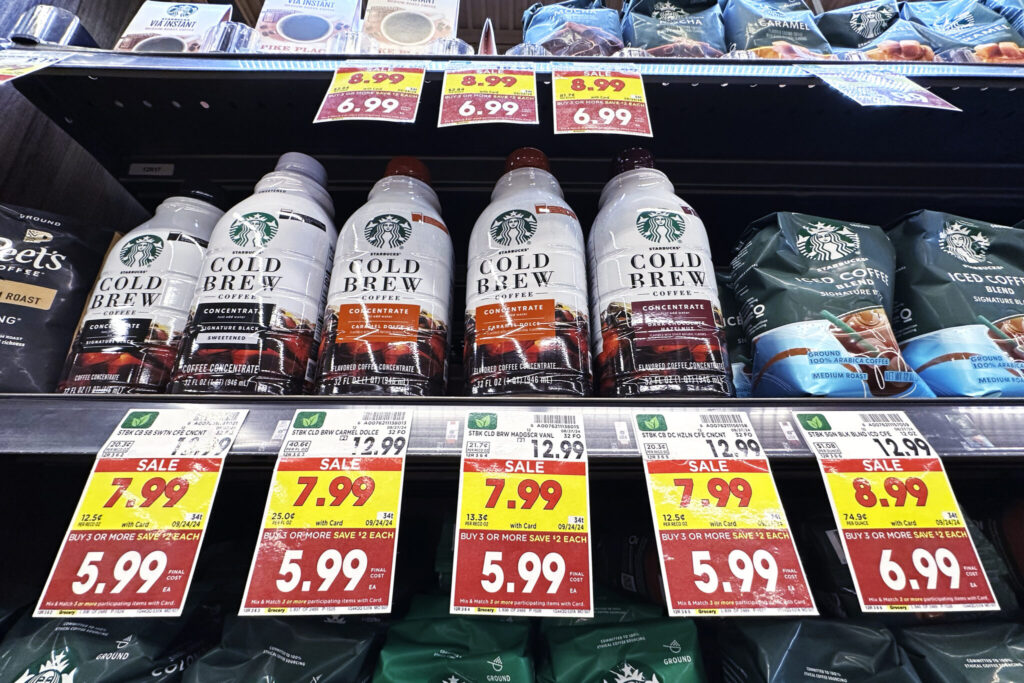US inflation/ consumer prices/ Federal Reserve/ core inflation/ inflation rate October 2024/ Trump inflation policy/ Jerome Powell/ rent prices/ economic growth/ Newslooks/ WASHINGTON/ J. Mansour/ Morning Edition/ After a steady two-year decline, US inflation saw a slight rise in October due to increased rents, used car prices, and airfares. This uptick may complicate Federal Reserve plans to reduce interest rates. Despite this, economists believe inflation is likely to ease gradually.

US Inflation Quick Look
- Slight Uptick in October: Inflation rose 2.6% year-over-year, up from 2.4% in September, marking the first increase in seven months.
- Core Inflation Remains Above Fed Target: Excluding food and energy, core inflation rose 3.3% annually, indicating persistent inflationary pressures.
- Economic and Political Influences: Trump’s recent election win raises uncertainty, with some of his policies potentially boosting inflation.
- Consumer Confidence and Market Reactions: Stock markets surged, but bond yields rose as investors weighed potential inflation risks.
- Fed’s Cautious Approach: Fed Chair Jerome Powell remains optimistic about inflation control but notes that it may progress unevenly.
- Consumer and Rent Trends: Slower growth in rent prices and consumer spending expectations signal potential relief from inflation pressures.
Inflation Uptick in October Raises Caution for Fed and Markets
Deep Look
After two years of consistent cooling, US inflation ticked up in October, according to the latest report from the Labor Department. Annual consumer prices rose 2.6%, a slight increase from September’s 2.4% rate, indicating that inflation could be stabilizing after reaching its lowest point since 2021. The 0.2% monthly rise in prices mirrored September’s increase, with notable price hikes in areas like rents, used cars, and airline tickets contributing to the overall change.
Despite the uptick, many economists believe that inflation will ultimately continue its descent. Core inflation—excluding volatile sectors like food and energy—maintained a 3.3% annual growth rate for the third consecutive month, a rate still above the Federal Reserve’s 2% target. Should this upward trend persist, it could cast uncertainty over financial markets, potentially complicating the Federal Reserve’s tentative plans to reduce interest rates. Over the last year and a half, wages have outpaced inflation, providing some relief to consumers, but a continuous increase in core inflation would challenge the Fed’s objectives.
The slight inflation bump is playing out against a backdrop of shifting economic expectations following Donald Trump’s recent presidential victory. Trump has emphasized his intent to lower inflation by increasing oil and gas production. However, some economic analysts caution that certain aspects of his policies—such as increased tariffs on imports and broad deportation measures—could put upward pressure on inflation if fully enacted. Stock prices surged following Trump’s election, with optimism stemming from expected tax reductions and regulatory rollbacks. Yet bond yields also increased, likely reflecting investors’ concerns about potential inflationary risks associated with Trump’s policy proposals.
The broader economic environment also shows strength, with the US economy growing at close to a 3% annual rate over the past six months, driven by sustained consumer spending, particularly from higher-income households. Federal Reserve Chair Jerome Powell recently expressed cautious optimism that inflation is on a downward trajectory, although he acknowledged that progress may be gradual and uneven. Powell highlighted that most inflationary pressures are diminishing, particularly as rent prices slow and wages rise at a manageable pace that doesn’t overly accelerate inflation.
A Federal Reserve Bank of New York survey showed that consumer expectations for inflation over the next 12 months have decreased to 2.9%, the lowest level in nearly four years. This trend in consumer sentiment may help mitigate inflation risks, as lower expectations can lead to reduced demand for immediate purchases and higher wages, which are common drivers of inflation.
Apartment rents are another area showing signs of relief for Americans. Although the government’s rent data, which includes both new and existing leases, still indicates a modest rise, Redfin’s report on new leases showed only a 0.2% increase in October, bringing the national median rent to $1,619. This slower growth suggests that some cost pressures in the housing sector may be easing, potentially offering a cushion for household budgets moving forward.
Overall, while October’s inflation data suggests a pause in the previous cooling trend, many economic indicators point toward continued progress in managing inflation, though a steady decline may take time. The Federal Reserve and financial markets will closely monitor these developments as they evaluate potential rate adjustments and economic policies in the months ahead.







